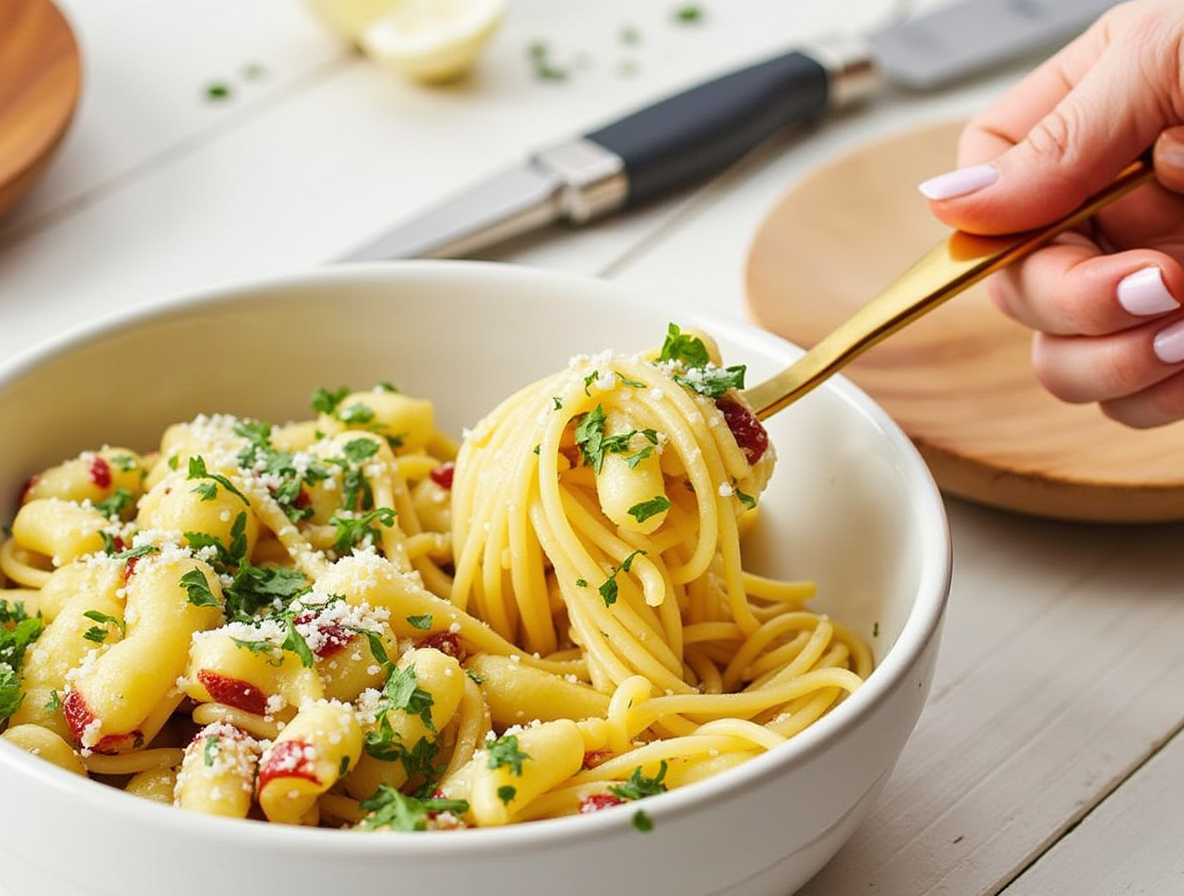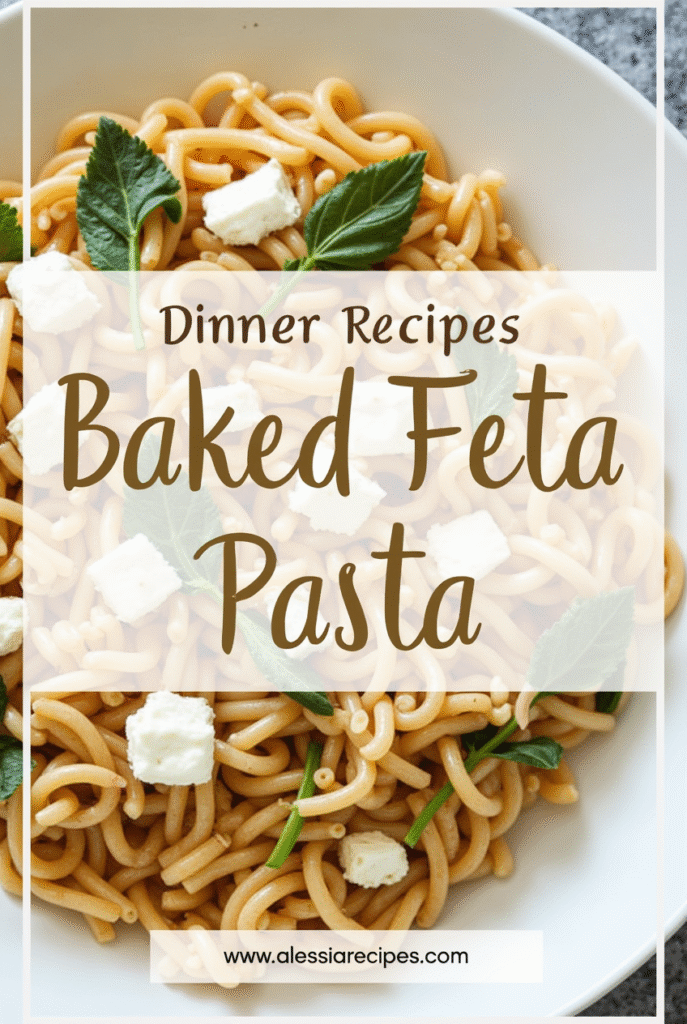The Secret Behind Perfect Feta Cheese Pasta: A Foolproof Guide
Feta cheese pasta initially took the internet by storm in early 2021, causing grocery stores to run out of feta cheese across the world. This viral sensation, also known as “TikTok Pasta,” actually originated in Finland when blogger Tiiu Piret first shared the recipe in 2018, before Jenni Hayrinen simplified it and consequently sparked a global cooking phenomenon.
We love how this baked feta pasta recipe combines just a few simple ingredients—a block of feta cheese, cherry tomatoes, olive oil, and pasta—to create a creamy, delicious pasta sauce with minimal effort. In fact, this feta cheese tomato pasta has become our go-to weeknight dinner because it requires so little hands-on time. The feta cheese pasta bake is certainly versatile, allowing substitutions like goat cheese or cream cheese, and additions like spinach or asparagus. Throughout this guide, I’ll walk you through exactly how to make feta cheese pasta that’s perfectly creamy and bursting with flavor, plus share some creative variations to make this dish your own.
Choosing the Right Ingredients for Feta Cheese Pasta
The success of your feta cheese pasta largely depends on selecting the right ingredients. Making thoughtful choices for each component will transform this simple dish into something truly extraordinary.
Why block feta is better than crumbled
When shopping for feta, I always reach for a block rather than pre-crumbled options. Block feta creates a significantly creamier sauce, primarily because crumbled versions often contain anti-caking agents that prevent proper melting. Furthermore, authentic Greek feta made from sheep’s milk (at least 70% sheep’s milk by law) produces a much richer, creamier result than cow’s milk varieties. This happens because sheep’s milk contains up to twice the fat content of cow’s milk.
For best results, look for Greek feta packed in brine, typically sold in small white plastic tubs. The brine not only protects the cheese from air exposure but also maintains its moisture and freshness for up to three months. This packaging method yields a softer texture that melts beautifully into the pasta sauce.
Best tomatoes to use: cherry vs grape
Both cherry and grape tomatoes work wonderfully in feta cheese pasta bake, yet they offer different qualities:
Cherry tomatoes are:
- Rounder and typically larger than grape varieties
- Juicier with thinner skins and higher water content
- Sweeter and break down quickly during cooking
Grape tomatoes, meanwhile, are:
- Oblong-shaped and smaller
- Meatier with thicker skins and lower moisture
- More durable with longer shelf life
For feta cheese pasta sauce that’s extra creamy, cherry tomatoes might be preferable since they break down quickly during cooking. However, if you’re baking the dish for longer periods (like the viral recipe’s 35-minute bake time), grape tomatoes resist burning better due to their lower moisture content.
Picking the right pasta shape
The ideal pasta shape catches and holds the creamy feta sauce. Short pasta varieties with curves, ridges, or tubes work exceptionally well. Consider shapes like:
- Cavatappi or fusilli for catching sauce in their spirals
- Rigatoni or penne for trapping sauce inside the tubes
- Bowtie pasta for a fun visual presentation
Optional add-ins: garlic, lemon zest, herbs
Elevate your baked feta pasta recipe with thoughtful add-ins. Garlic provides essential flavor—either add it raw at the end or roast it alongside the tomatoes and feta for a softer, mellower taste. A finishing touch of grated lemon zest brings brightness that balances the richness of the cheese.
Fresh herbs, particularly basil, add vibrant color and flavor. Alternatively, try fresh oregano or thyme for variation. For those seeking more complex flavors, consider adding red pepper flakes for heat, quartered shallots for jammy sweetness, or even smashed garlic to infuse the olive oil.
Step-by-Step: How to Make Feta Cheese Pasta
Making the perfect feta cheese pasta requires just four straightforward steps that transform simple ingredients into a deliciously creamy dish. Let me walk you through the process that makes this viral sensation so effortless to prepare.
1. Preheat and prep the baking dish
First, preheat your oven to 400°F (200°C). Select a baking dish that’s the right size—ideally a 9×13-inch dish or something similar where the ingredients fit snugly together. Add cherry tomatoes to the dish, then drizzle with olive oil. Season with salt and pepper, plus optional red pepper flakes for heat. Place the block of feta cheese in the center of the dish, surrounded by the tomatoes. Drizzle a little more olive oil over the feta to ensure it doesn’t dry out while baking.
2. Roast feta and tomatoes together
Next, place the baking dish in the preheated oven and bake uncovered for 35-40 minutes. Throughout the baking process, the tomatoes will soften, burst, and release their juices while the feta becomes golden-brown on top and creamy inside. You’ll know it’s ready when the tomatoes are blistered and slightly charred, and the feta looks melted but still holds its shape.
3. Boil pasta and reserve pasta water
While the tomatoes and feta are roasting, bring a large pot of generously salted water to a boil. Cook your chosen pasta according to package instructions until al dente. Before draining, be sure to reserve about ½-1 cup of the starchy pasta water—this is crucial for adjusting the sauce consistency later.
4. Combine and mix into a creamy sauce
As soon as you remove the baking dish from the oven, add minced garlic and fresh basil leaves directly to the hot mixture. The residual heat will soften the garlic without making it bitter. Using a fork or spatula, mash and stir the roasted feta and tomatoes until they form a creamy sauce. Add the drained pasta to the dish and toss everything together until well coated. If the sauce seems too thick, gradually add some of the reserved pasta water until you reach your desired consistency.
Tips to Perfect the Feta Cheese Pasta Sauce
After assembling your feta cheese pasta, a few crucial techniques can elevate it from good to extraordinary. These finishing touches make all the difference between a mediocre dish and a creamy, flavorful masterpiece.
Use pasta water to adjust consistency
The starchy pasta water is your secret weapon for creating the perfect sauce texture. Before draining your pasta, reserve about ½ to 1 cup of the cooking water. This liquid gold helps loosen up the sauce if it becomes too thick after mixing. Additionally, the starchiness in the water allows the sauce to adhere better to the pasta, creating a silky, cohesive dish rather than dry pasta with sauce sliding off. Add the reserved water gradually while stirring until you achieve your desired consistency.
Smash tomatoes and feta while hot
Timing is everything when mixing your sauce components. Work quickly once the baking dish comes out of the oven, as the feta becomes more difficult to incorporate as it cools. Use the back of a spatula to scrape any crusty bits from the bottom of the pan – these contain concentrated flavor. For the creamiest result, gently squash the tomatoes and cheese while they’re still hot. A potato masher works wonderfully for this task, although a fork can also do the job effectively.
Add fresh herbs at the end for flavor
Fresh herbs brighten the rich, creamy sauce significantly. Stir them in just before serving rather than cooking them, which preserves their vibrant flavor and color. Basil is the classic choice, although parsley, oregano, or thyme work beautifully too. Consider adding a splash of acid like lemon juice or a few drops of red wine vinegar to lift and balance the flavors.
Avoid overcooking the pasta
For perfect feta cheese pasta sauce, the pasta itself must be cooked properly. Aim for al dente – with a slight firmness when bitten. Overcooked pasta becomes mushy and won’t stand up to the substantial sauce. Moreover, firmer pasta continues cooking slightly when mixed with the hot sauce, ultimately reaching the ideal texture in the finished dish.
Creative Variations and Add-Ons
One of the greatest joys of the feta cheese pasta trend is its incredible versatility. The basic recipe serves as a perfect canvas for endless customization possibilities. Let me share some of my favorite ways to transform this already delicious dish into something uniquely yours.
Add spinach, mushrooms, or olives
Vegetables add both nutrition and flavor to your feta cheese pasta. Stirring spinach or torn kale leaves into the hot tomatoes and feta immediately after baking allows the residual heat to wilt the greens perfectly. Mushrooms bring an earthy depth to the dish—simply slice your favorites and add them to the baking dish with the tomatoes. For Mediterranean flair, toss in some chopped artichokes, olives, or roasted bell peppers. Beyond these, experiment with butternut squash or eggplant for seasonal variations.
Try goat cheese or ricotta instead of feta
Although feta creates a wonderful base, other cheeses offer exciting alternatives. Goat cheese provides a tangy creaminess similar to feta but with its own distinct character. Ricotta yields an ultra-creamy, mild sauce that works beautifully with stronger add-ins. For a truly indulgent twist, burrata creates a luxuriously silky texture. Plus, halloumi or queso fresco can be excellent substitutes depending on your flavor preferences.
Make it spicy with red pepper flakes
Heat lovers can easily adjust the spice level of their feta cheese pasta. A generous sprinkle of red pepper flakes (about ¼-½ teaspoon depending on your tolerance) adds a pleasant warmth that balances the creamy richness. For more complex heat, consider Calabrian chilies which bring both spice and depth. Regardless of your heat preference, add the spicy element before baking to allow the oils to infuse throughout the dish.
Add protein: chicken, shrimp, or sausage
Transforming your feta cheese pasta into a protein-packed meal is simple yet effective. Shrimp pairs wonderfully with the Mediterranean flavors—four ounces provides approximately 24 grams of protein with under 130 calories. Rotisserie chicken offers convenience and flavor, while diced chicken sausage adds both protein and seasoning. For vegetarians, pan-fried tofu cubes make an excellent protein source. Furthermore, these additions can boost the protein content significantly—some variations contain up to 56 grams of protein per serving, helping you stay full longer.
Conclusion
This feta cheese pasta represents the perfect combination of simplicity and flavor. Throughout this guide, we’ve explored how a handful of basic ingredients transforms into a creamy, delicious meal that captivated millions worldwide. Block feta cheese clearly makes all the difference, especially when paired with juicy cherry tomatoes and the right pasta shape to capture every bit of that luscious sauce.
What makes this dish truly special, however, is its foolproof nature. The four straightforward steps require minimal effort yet yield maximum flavor. Additionally, the techniques we’ve discussed—using pasta water wisely, mashing ingredients while hot, adding fresh herbs at the end—elevate the dish from good to extraordinary.
Perhaps most importantly, this feta pasta offers endless possibilities for customization. Whether you prefer adding spinach for nutrition, swapping goat cheese for a different flavor profile, spicing things up with red pepper flakes, or incorporating protein for a complete meal, this versatile dish adapts to your preferences.
Therefore, next time you need a quick yet impressive dinner option, remember this baked feta pasta. The viral sensation earned its popularity for good reason—it delivers restaurant-quality results with pantry staples and minimal kitchen skills. Try it once, and this Mediterranean-inspired creation will undoubtedly become a regular feature in your meal rotation, just as it has in mine.
FAQs
Q1. How do you incorporate feta cheese into pasta dishes? To incorporate feta cheese into pasta, add it to a baking dish with cherry tomatoes and olive oil. Bake until the feta is soft and creamy, then mix it with cooked pasta to create a delicious sauce. You can also crumble feta over hot pasta and toss it together for a quick and easy dish.
Q2. Does feta cheese melt well in pasta sauces? Feta cheese doesn’t melt like hard cheeses, but it softens and becomes creamy when heated. This makes it ideal for pasta sauces, especially when combined with ingredients like tomatoes. The result is a tangy, creamy sauce that coats the pasta beautifully.
Q3. Can feta cheese be used in pasta bakes? Yes, feta cheese works wonderfully in pasta bakes. It adds a rich, tangy flavor and creamy texture to the dish. For best results, use block feta rather than crumbled, as it creates a creamier sauce when baked with other ingredients like tomatoes and olive oil.
Q4. What’s the best way to make a pasta sauce with feta? To make a pasta sauce with feta, bake a block of feta with cherry tomatoes and olive oil until soft and creamy. Mash the ingredients together while hot, then toss with cooked pasta. Add some reserved pasta water to achieve the desired consistency. For extra flavor, include garlic, herbs, or red pepper flakes.
Q5. What are some creative variations for feta cheese pasta? You can customize feta cheese pasta in many ways. Try adding vegetables like spinach, mushrooms, or olives for extra flavor and nutrition. Experiment with different cheeses like goat cheese or ricotta instead of feta. For a spicy kick, include red pepper flakes. You can also add protein such as chicken, shrimp, or sausage to make it a more substantial meal.


